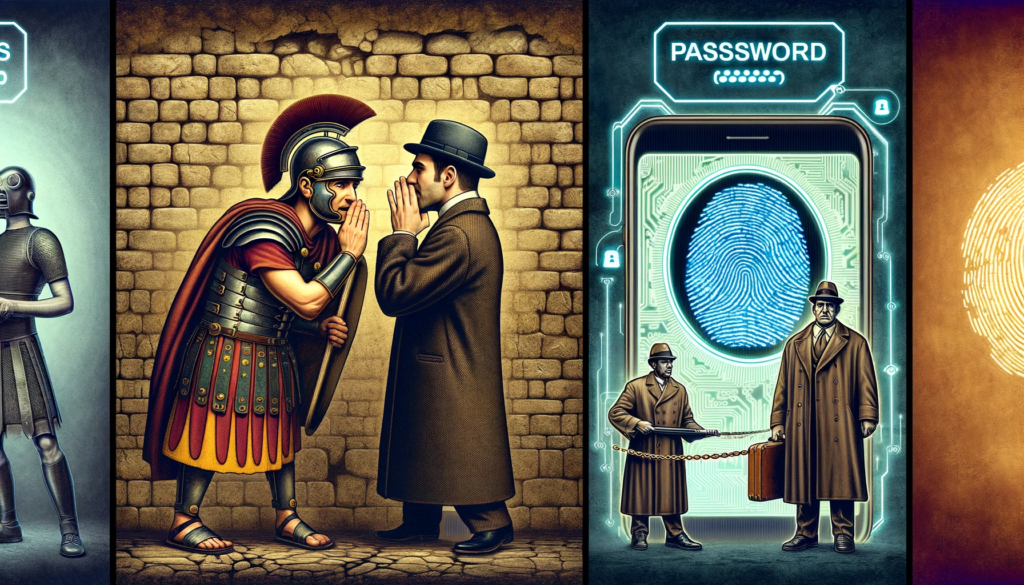
The evolution of password security is a fascinating journey that illustrates the advances in technology and the corresponding shifts in security practices. This journey begins in ancient times, with the Roman Empire’s use of spoken code words, or “watchwords,” by their army. These passphrases were a rudimentary form of authentication, distinguishing friends from foes.
In the 1920s, during the Prohibition era, passwords gained prominence in a different context — they were used to gain access to illegal speakeasy bars. People would use a password, code phrase, or a card to enter these establishments, demonstrating an early use of passwords in civilian life.
The digital era of passwords began in 1961 with MIT computer science professor Fernando Corbato, who introduced the first digital password. He built a time-sharing computer system where multiple users required private access to terminals, and the solution was to assign each user a unique password.
By the 1970s, passwords had become a more integral part of digital security. Robert Morris developed one-way encryption for passwords, known as hashing, in 1974, which remains a cornerstone of password security today. Additionally, Morris, along with Ken Thompson, introduced the concept of “salting” passwords in 1979. This involves adding random characters to stored passwords, making them harder to crack.
Fast forward to the present, and the role of passwords has expanded exponentially. With the advent of Web 2.0, an average person now manages around 100 passwords, often shared among family, friends, and coworkers. This has led to significant password fatigue, as remembering all these details is challenging.
In response to these challenges, modern password management has evolved. The use of password managers with autofill capabilities, along with security features like two-factor authentication (2FA) and biometrics, has become prevalent. These tools have largely replaced older methods of password storage, such as writing them on sticky notes or storing them in spreadsheets.
Moreover, there’s an anticipation of a shift towards a passwordless world around 2025. This future trend hints at the evolution of authentication methods towards more advanced systems like biometrics and multi-factor authentication (2FA), moving away from the traditional alphanumeric password paradigm.
The evolution of password security reflects a continual adaptation to technological advancements and changing security needs. From ancient Rome to the digital age, the journey of passwords showcases the intersection of human ingenuity and the need for security in an increasingly connected world.